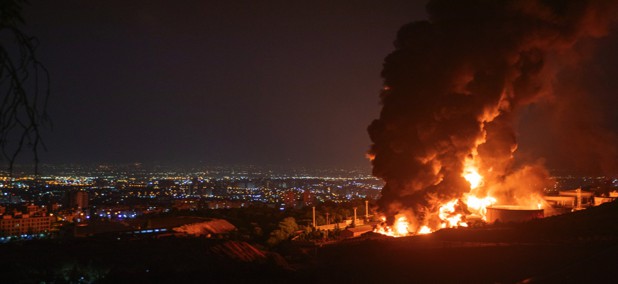In the early hours of June 13, 2024, Israel executed a meticulously planned military operation targeting Iran’s nuclear capabilities. A commando team, including a young Iranian operative known by the initials S.T., initiated attacks on critical anti-aircraft batteries surrounding Tehran. This multi-faceted strike was part of a broader strategy by Israel to weaken Iran’s military infrastructure and deter its nuclear ambitions.
The operation had been in the making for over a year, orchestrated by Mossad, Israel’s intelligence agency. It involved a coalition of Israeli-trained commandos, many of whom were recruited from within Iran and neighboring nations. Their motivations varied, with some seeking revenge against the Iranian regime, which has long suppressed political dissent, while others were incentivized by financial rewards or opportunities for education abroad.
The June 13 attack followed previous significant operations by Mossad, including a 2023 strike that crippled Hezbollah using advanced technology. In this latest operation, approximately 70 commandos launched a coordinated assault at 03:00 local time, targeting a carefully selected list of Iranian defenses. The result was a significant blow to Iran’s military capability, with Israeli warplanes subsequently executing airstrikes on nuclear facilities and destroying nearly 50% of Iran’s estimated 3,000 ballistic missiles.
Intelligence and Strategic Execution
The success of the June operation hinged on intelligence gathered by Mossad agents embedded within Iran. This intelligence allowed Israel’s air force to execute bombing runs with a level of precision that resulted in no losses for their aircraft. In a particularly notable tactic, Israeli cyber operatives misled Iranian military leadership into attending a false meeting, which culminated in an airstrike that killed twenty Iranian military officials, including three chiefs of staff.
The backdrop of this operation is a complex history of Israeli-Iranian hostility, which intensified following the October 7, 2023, attack by Hamas that resulted in over 1,200 Israeli deaths. In response to escalating threats, Israel has recalibrated its military strategies, focusing intensely on countering Iranian influence and capabilities.
According to various Israeli intelligence officials, the June attack represented a pivotal moment in the ongoing covert conflict between Israel and Iran. The operational framework shifted around 15 years ago, as Mossad began to recruit non-Israeli operatives for missions inside Iran. S.T., who had previously faced persecution from the Iranian regime, was among these recruits. His journey from a student in Tehran to a key player in a covert operation underscores the changing dynamics of espionage in the region.
Shifts in Military Strategy and Regional Implications
Israel has a long history of military operations aimed at preventing its neighbors from acquiring nuclear weapons. This includes past strikes against Iraqi and Syrian nuclear facilities. The approach has evolved significantly, particularly under the leadership of former Mossad director Meir Dagan, who emphasized reliance on local agents to conduct operations.
The intelligence landscape within Iran is complicated, with ethnic minorities comprising a significant portion of its population. This has provided Mossad with a diverse pool of potential recruits. For S.T., the motivation was deeply personal; after enduring torture at the hands of the Iranian regime, he was driven by a desire for revenge and a promise of support for his family from Israeli operatives.
Israeli Prime Minister Benjamin Netanyahu has been vocal about maintaining Israel’s strategic advantage in the region. The capability to conduct operations like the June attack reflects a broader shift in military strategy, enabling Israel to undertake significant strikes with minimal risk to its own forces.
In the aftermath of the airstrikes, the extent of the damage to Iran’s nuclear program remains a topic of debate among analysts. Some Israeli officials assert that the military operations have significantly delayed Iran’s pathway to nuclear capability. Others caution that such actions could backfire, potentially accelerating Iran’s resolve to pursue nuclear weapons as a deterrent against further Israeli aggression.
As tensions continue to rise in the region, Israel’s calculated approach to countering Iranian threats will likely remain a focal point of international attention, shaping the geopolitical landscape in the coming years. The operations conducted in June exemplify the complexities of modern warfare, where intelligence, technology, and human motivations intertwine to influence national security strategies.





































































